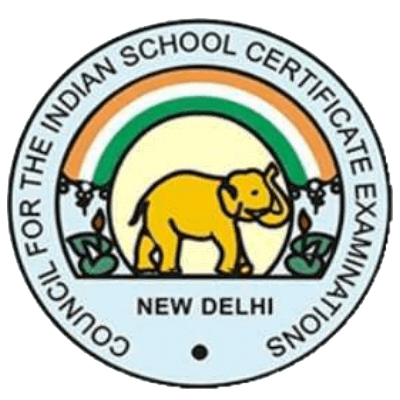
To Top
Holistic Education at CP Goenka: Leading The Way Among Schools In Oshiwara
Schools affiliated with the Cambridge board foster students’ curiosity and natural love of study. CP Goenka is not an exception from this perspective. The IGSCE school gives importance to a holistic education for teaching every learner. CPGIS is not simply an international school; it is a learning hub, where students can explore new skills and gain knowledge. Moreover, CPGIS believes that learners are not merely a vessel for information. Rather, they are individuals with different aspirations and needs. The school aims to make their lives meaningful and fulfilling. It has been committed to providing education with holistic approaches.

Holistic education for students
Holistic education comprises an all-inclusive approach to educating students based on their diverse needs, including
- Social
- Emotional
- Academic
- Ethical
The integrated learning format focuses on both the non academic and academic needs. Learners can analyse their own actions. They determine how their activities will influence the local and global communities. Moreover, teachers engage learners in projects, where they should use their critical thinking abilities to solve real-world issues.
At CP Goenka, the curriculum also inspires students to unlock creativity and ignite curiosity. The IGCSE curriculum enables them to hone their knowledge and become future-ready individuals.
Holistic education focuses on every aspect of the child and values the uniqueness of each learner. The main components of this type of education are
- Experiential learning
- Individualised instruction
- Social-emotional development
Personalised instruction is a way to tailor learning processes to meet the learner’s needs. Experiential learning is about dealing with hands-on activities like projects, field trips, and simulations. Moreover, the social-emotional development of learners is another aspect of the modern, holistic educational programme. It promotes positive relationships and self-awareness among learners. The combination of these components creates the best environment for learners.
Teachers who have considered holistic development for children help them develop a sense of cultural identity. They allow students to focus on heritage and culture. With an open-minded approach, teachers encourage learners to show good manners. It will also positively impact the self-image of children.
How does holistic education benefit your children?
The IGSCE school, CPGIS has chosen a holistic learning philosophy to provide a range of benefits.
Better academic results-
Holistic education is effective in improving the performance of your kids. Children of different backgrounds prefer this educational approach. Teachers need to create customized learning styles for every student. The learning environment is highly favourable to students. Holistic approaches will also increase their kids’ brain potential and keep them emotionally safe.
Improved emotional and mental well-being-
The school focuses not just on the academic performance of your kids. It never overlooks the importance of the emotional and social learning process. So, students find an opportunity to develop more confidence and self-awareness. They will also become socially responsible in the future years.
Gain problem-solving ability-
- Teachers allow learners to solve problems in real-world scenarios. Your children will apply their critical-thinking abilities to deal with hands-on projects. During their academic years, they can gather and interpret data to work with others.
Lower the inequity risks -
Holistic education involves an approach that lowers the psychological impact of violence and other issues. The international school always accepts diversity and inclusivity.
Celebrate a learner’s uniqueness-
The holistic approach is beneficial to everyone, ranging from pre-primary to secondary-level students. It is based on the concept that every learner has some uniqueness. The inherent flexibility of this approach allows teachers to customize the curriculum and meet the child’s needs.
Moreover, it helps children develop to the fullest extent in the most nurturing environment. On the contrary, qualified teachers at CPGIS work cooperatively to differentiate the guidance instructions depending on the child’s needs. So, it will help your kids achieve academic and social success.
How does CPGIS provide holistic education?
Teachers at CP Goenka implement different educational models that embrace holistic approaches.
Self-guided learning- Teachers create self-guided academic environments and allow learners to learn new things at a convenient pace. This self-guided culture promotes personalisation and reduces the risk of inadequacies of learning models. Educators think low-stakes educational assessments are best for adjusting the curriculum’s content. Classrooms are comparatively small and comprise students of varying ages and abilities.
Experiential learning- Hands-on educational approaches are highly beneficial to help students gain practical knowledge and experience. For example, students work in groups and explore various learning styles to identify the most effective methods for them. This learning model also comprises some exercises to make students familiar with real-life issues.
Interdisciplinary assessments and coursework-Regular coursework improves the cognitive growth of children. It helps teachers address multiple subjects. Like other IGSCE schools in Oshiwara, CP Goenka creates integrated programs, involving teachers from various disciplines. Teachers educate students on thematic courses, which deal with issues from different perspectives. Furthermore, students can do independent research and fieldwork to show their skills.
Other teaching strategies for holistic education in the IGSCE-
Developing strong relationships between teachers and students- When teachers develop strong bonds with learners, it has a significant positive impact on engagement and performance. Students of any intelligence level have a better chance of achieving success. Teachers try to nurture relationships with students by responding to their needs. They act in a culturally sensitive way and allow students to create classroom rules. They also assume leadership roles and encourage communication among students.
Incorporate emotional reflection- Some teachers in a traditional school do not look beyond educational performance to foster emotional and mental well-being. Emotional reflection should be a part of everyday routine, and teachers must enable learners to contemplate.
Boost self-confidence- Learners should have a strong belief that they are a part of the school. That is why CPGIS teachers allow them to develop self-confidence and provide several opportunities to consume structured information.
Conclusion-
It is challenging to develop a curriculum that meets every student’s needs. Still, CP Goenka prepares teachers to nurture learners of varying learning capabilities and educational levels. Its holistic education creates the most creative learning environment. In a positive educational environment, students can achieve their goals and identify potential issues.










